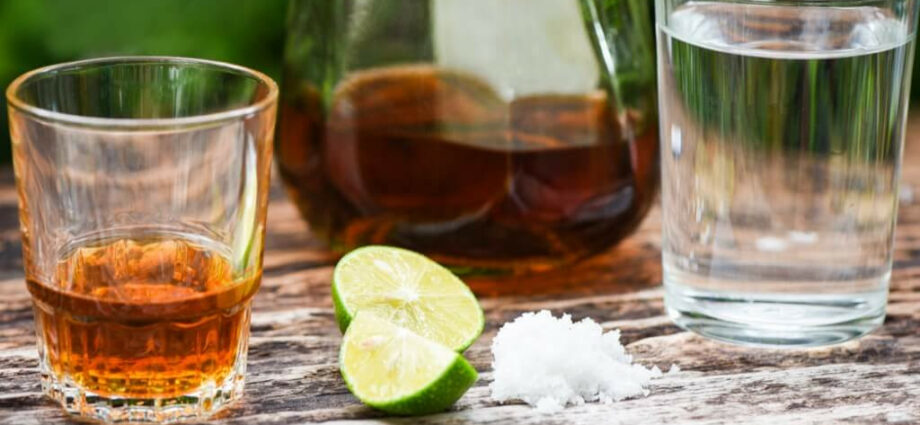The nuanced flavors and intricate processes that go into making tequila are what make it famous. But there’s a contemporary twist to this tradition-laden process—the usage of additives—that could surprise many drinkers, both experts and amateurs. Even though it’s not often brought up outside of tequila industry meetings, this part of the process is crucial in making the drink we drink.
The agave plant, and more especially the blue agave, grown in the sunny fields of Jalisco and the neighboring areas, is fundamental to the tequila experience. Harvesting, boiling, fermenting, and distilling the agave plant into tequila is an arduous but rewarding process. Another process is added to many commercial tequilas to improve their flavor, color, and texture.
Substances used to alter the flavor, scent, or look of tequila are known as additives. Their use is driven by a variety of goals, including the need for batch-to-batch consistency and the aim to make a simply distilled spirit more approachable to a wider audience by reducing its harsher characteristics. Many different kinds of additives are now legal in tequila because the law states that they can be up to 1% by volume without having to be disclosed on the label.
Although the law establishes guidelines for additive use, there is still some uncertainty, which has prompted calls for greater openness from the industry. Current regulatory regulations are being questioned as to whether they benefit the tequila sector as well as its customers, who are demanding more information about the alcohol they consume.
Types of Additives
The most common additives found in tequila include caramel color, glycerin, oak extract, and various sweeteners such as agave syrup or artificial sweeteners. Each serves a specific purpose:
- Caramel Color is used to impart a rich, amber hue to tequila, often to suggest a longer aging process and appeal to those accustomed to the deep colors of aged spirits like whiskey or brandy.
- Glycerin, a viscous substance, is added to smooth the mouthfeel of tequila, making it more palatable by softening the sharpness that some distillates possess. While it enhances the texture, it can sometimes mask the agave’s natural flavors.
- Oak Extract introduces woody notes and complexity, simulating the effects of barrel aging in a fraction of the time. This can give the tequila an impression of maturity and depth that would traditionally require months or years in oak barrels.
- Sweeteners, such as agave syrup, are used to round off the edges of tequila, adding a sweetness that can make the spirit more approachable, especially to those new to tequila or those who prefer a less aggressive flavor profile.
The Debate Over Additives
The debate surrounding additives in tequila is both passionate and complex. On one side, enthusiasts and some producers champion the idea that tequila should be experienced in its most natural form, free from any additives. This group argues that additives compromise the spirit’s purity, obscuring the distinct flavors and aromas that speak to the agave’s origin—its terroir. They suggest that the true essence of tequila lies in its ability to convey the characteristics of the blue agave and the soil it’s grown in, offering a genuine taste of the Mexican landscape.
This purist perspective is about heritage and authenticity. For them, an additive-free tequila is a clear principle, insisting that the spirit should stand as a testament to traditional methods and the natural variability of the agave plant.
Then there are some who think additives are a must-have for tequila production. In their view, chemicals can make the spirit more consistent, so that no matter what happens to the agave crop, every bottle will have the same flavor profile. The necessity to meet the demands of a global market, where customers may desire a tequila that is smoother, sweeter, or more consistent, is a common justification for this method.
From this vantage point, tequila’s additions serve as a means to an end—to make the spirit more approachable to those who might find its inherent assertiveness off-putting. The additions help make tequila more accessible to people who aren’t familiar with its distinctive qualities, which is something that this group of producers and consumers loves.
Consumer Are Demanding Transparency
What most can agree on is the need for transparency. This push for openness reflects a broader trend across the food and beverage sector, where knowledge about a product’s origin, ingredients, and production process is highly valued. As part of this movement, tequila producers are adopting a range of strategies to address consumer demand for clarity and authenticity.
Some distilleries are leading the charge by openly disclosing the specifics of their additive usage, a move that is still not mandated by industry regulations. These producers list the types and quantities of additives on their labels or websites, providing drinkers with the information needed to make informed choices. This level of disclosure is relatively rare but is gaining traction as a marketing tool that appeals to a growing segment of the market looking for pure and unmodified spirits.
More and more tequila labels boast that their spirits are “additive-free.” This label is quickly becoming a mark of distinction, signifying a dedication to using only time-honored distillation techniques while preserving the authentic blue agave flavors. To educate both tequila connoisseurs and the general public on the significance of maintaining the spirit’s original character, many distilleries and their owners hold tastings, seminars, and tours of the distillery.
Efforts to increase transparency are also getting a boost from new innovation and digital platforms. Databases are now available on tequila-educational apps and websites, allowing users to investigate the manufacturing facts of their preferred brands, including the presence or absence of additives. Thanks to user evaluations, expert suggestions, and comprehensive distillation process breakdowns, a few of these platforms have become invaluable resources for anyone trying to make sense of the complicated world of agave spirits.
Other ways distilleries are trying to be more open include using social media and interacting directly with customers. Brands may increase customer trust and loyalty by giving them a glimpse inside the manufacturing, harvesting, and fermentation processes. The ability of producers to tell their story in their own words through this direct communication highlights their commitment to excellence and authenticity.
What Lies Ahead?
The future of tequila lies in balancing innovation with reverence for its rich heritage, where every sip tells a story of the land, the people, and the passion that fuels this iconic Mexican spirit. As we navigate this landscape, the conversation around additives is not just about taste or tradition but a broader dialogue on authenticity, quality, and the values we cherish in the spirits we choose to celebrate life’s moments.

